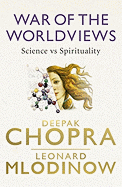New Year ka funda

Many of us from India celebrate more than one New Year. Besides the 1st of January every year, we also celebrate another New Year day based on the region we come from in India and the Indian calendar. What are the origins of this Indian calendar which has been around for more than 5000 years? Who invented it? What is it based on?
The world at large uses the civic calendar system with 01 January 2011 as the New Year day next year. In fact, the celebration of the New Year on 01 January is a relatively new phenomenon based on the calendar system started in Europe during 1852. Prior to that many a calendar reforms happened over the past 2500 years till the Middle Ages. Even with the current calendar we use, there are proposed reforms wanting to switch to a more accurate system.
Besides the current calendar which we all use, there are quite a few other calendars which are also actively in use today. Since ancient times many civilizations and societies had devised calendars, along with its periodic reforms suited to their particular needs. Historically there are at least 20 or may be 30 odd calendar systems used for different purposes by different cultures, based on Luni-Solar, Lunar or Solar Calendar systems. To name a few, there is the Hebrew calendar used by Jews, Iranian (Persian) calendar used in Iran and Afghanistan, Islamic calendar, Chinese calendar, Julian calendar, Ethiopian calendar, Thai solar calendar, Buddhist calendar, Bahá’í calendar, Mayan calendar, Hindu calendar called ‘Panchang’ etc.
The traditional Indian and Chinese calendar is a “Luni-solar calendar” based on the combined computations of the actual positions of the Moon (luni) and the Sun (solar). The Indian calendar in use is a combination of both solar and lunar inferences where months are based on the moon, while the seasons are governed by the sun. The current national calendar of India was set up in 1957 by the Calendar Reform Committee that formalized a luni-solar calendar.
What is the origin of Indian calendars? The Indian calendars in particular are one of the most ancient calendars of the world as they descend from the Vedic times. There are many references to calendars in the Holy Vedas. The Hindu calendars (regional and the national Saka calendar) are used mainly for festivals, religious ceremonies, family-social functions, farming festivals etc. The Hindu calculation of time (called Kaal in Sanskrit) is supposed to have come to us from Sage Ganita who is mentioned in the Manusmriti and the Mahabharata.
Mostly, the Indian calendars are inherited from a system first articulated in Jyotish Vedanga which is an adjunct of the Holy Vedas. The calendars then got standardized in the ancient astronomical text S?rya Siddhanta and subsequently reformed by olden astronomers and cosmologists like Aryabhatta, Varahamihira and Bhaskara. They surmised that ‘time’ is cyclical in nature, which means every starting point will have to be an ending point.
Confirming the achievements of Indians in astronomy and cosmology, Marquis Pierre Simon de Laplace (1749-1827) French mathematician, philosopher, and astronomer, wrote:
“Nevertheless the ancient reputation of the Indians does not permit us to doubt that they have always cultivated astronomy, and the remarkable exactness of the mean motions which they assign to the Sun and the Moon necessarily required very ancient observation.”
The ancient Hindu astronomers, philosophers and mathematicians did not think of time in linear terms with a beginning and an end. Hence time is thought in terms of great cycles of thousands and millions of years and measured in kalpas, yugas, manvantaras, cosmic day and night of Brahma etc which are extremely long periods of time.
The concept of time and the resulting account in the form of the calendar has been studied deeply by the scientists the world over. The ancient Indian scientists during their time also came out with some original work in understanding this intriguing concept and measure of time. The fruit of this effort was the Indian calendar i.e. the ‘Panchang’ or ‘’Panjika’ which India uses till today, tough with reforms.
Though we tend to use the universal calendar for all practical, administrative and commercial purposes, we refer to the traditional Panchang for all new undertakings in life, for auspicious events like weddings, religious rites like Naamkaran, Shraadh, Tarpan etc. The Panchang covers everything from the phases of the moon, the positions of the constellations, sun, stars, planets, and identifies auspicious time & day for various activities.
Panchang is derived from two words – ‘Panch’ meaning five and ‘ang’ meaning parts. The Panchang routinely used by pundits and astrologers contain five attributes of the day i.e. which are Vaar (weekday); Nakshatra (star or constellation through which the moon is passing); Thithi (lunar day); Yoga (total distance traversed by the sun & moon from a specific point); and Karana (half a lunar day). In many parts of India, especially in South India, birthdays and other anniversaries are celebrated mainly on lunar days (thithis) and nakshatra.
Based on the mathematical analysis found in the ancient astronomical texts, we can only infer that the ancient Indian scientists were too cerebral and superlative. They primarily were Acharyas belonging to the different branches of Vedic metaphysics. After all the wonderful effort to the measure and reporting of ‘time’, the Acharyas and Gurus of the Vedic religion gave some startling advice to mankind, who according to them, are caught in the realm of time and space, caught in the karmic cycle. They say that ‘Time’ exists only in the minds of ignorant. Hence they advised to go ‘beyond’ the dimension of time. But how is that possible? Isn’t that mind boggling? I mean time-boggling?






